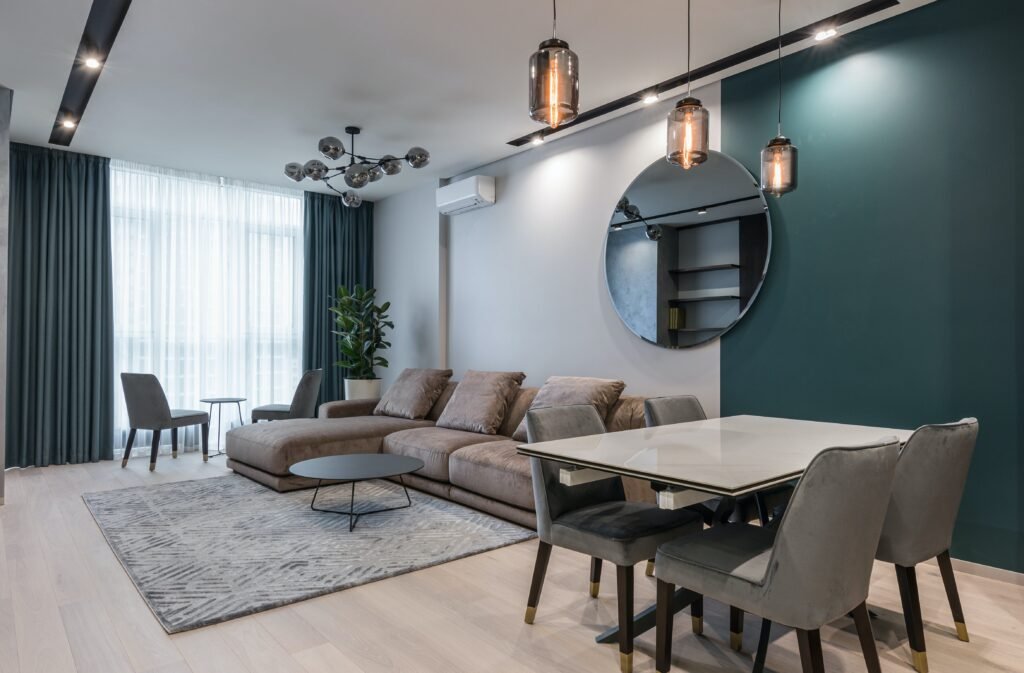Universal Design in Home Staging & Interior Design:
Designing spaces to be accessible and usable by people of all ages, abilities, and sizes.

The Importance of Universal Design in Home Staging – Why it’s Something to Consider
Universal Design in home staging involves creating spaces that are accessible and comfortable for a wide range of potential buyers, regardless of age, sizeFurniture Scale in Home Staging & Interior Design: The size and proportion of furniture relative to the space it occupies. Proper scale ensures comfortable movement, avoids overcrowding, and balances the visual composition. The Importance of Furniture Scale in Home Staging - Why it's Something t... More, or ability. This approach to staging emphasizes ease of use, safety"Ergonomics" in Home Staging & Interior Design: Designing spaces for comfort, safety, and efficiency, considering furniture placement, traffic flow, and accessibility for different users. The Importance of Ergonomics in Home Staging - Why It's Something to Consider Ergonomics is an important con... More, and convenience. Incorporating elements of universal design can make a home appealing to a broader audience, including families, elderly buyers, and those with disabilities.
When considering universal design in staging, it’s important to focus on features like wide hallways, step-free entrances, and accessible bathrooms and kitchens. These design elements not only enhance the functionalityFunctionality in Home Staging & Interior Design: The ability of a space to serve its intended purpose efficiently and comfortably. Staging considers furniture function, traffic flow, and accessibility to optimize everyday living. The Importance of Functionality in Home Staging - Why it's Somethi... More and appeal"Appeal" in Home Staging & Interior Design: The overall attractiveness and desirability of a property to potential buyers, influenced by factors like curb appeal, layout, functionality, and staging. The Importance of Appeal In Home Staging - Why It's Something to Consider Appeal, in the context ... More of the home but also demonstrate inclusivity and consideration for diverse needs. Universal design can be a significant selling point, particularly in markets where accessibility and convenience are highly valued.
Tips and Best Practices when Utilizing Universal Design in Home Staging
Universal Design in home staging involves creating spaces that are accessible, comfortable, and usable for everyone, regardless of age, size, or ability. Here are some best practices:
Accessibility: Ensure that the home is accessible, with features like wide doorways, minimal level changes, and spacious hallways that can accommodate wheelchairs if necessary.
Functional Layout"Floor Plans" in Home Staging & Interior Design: The layout of a space, showing the arrangement of rooms, doors, windows, and other fixed elements. Understanding the floor plan is essential for effective furniture placement and traffic flow in staging. The Importance of a Floor Plan in Home Stag... More: Stage the home with a layout that is easy to navigate and use. For example, arrange furniture to allow for ample movement"Flow" in Home Staging & Interior Design: The ease and convenience of movement within a space, considering traffic patterns, furniture arrangement, and clear pathways. Good flow enhances livability and functionality. The Importance of Flow in Home Staging - Why It's Something to Consider Flow in... More space and easy access to doors and windows.
Multi-Generational Appeal: Stage spaces that appeal to a broad range of ages and abilities. For instance, a bedroom on the main level can be staged as a guest room or a space for aging relatives.
Safety Features: Highlight any safety features of the home, such as non-slip flooring, handrails in bathrooms, and good lighting.
Flexible and Adaptable Spaces: Show how different rooms or areas can be adapted to suit various needs, such as a home office that can double as a craft room.
Smart Home Technology: If the home includes smart home features that enhance accessibility and ease of use, such as voice-controlled lighting or thermostats, make sure these are showcased.
By focusing on universal design principles, you can stage a home that not only appeals to a broad audience but also demonstrates a commitment to inclusivity and accessibility.

